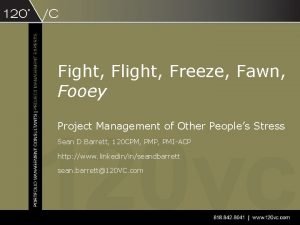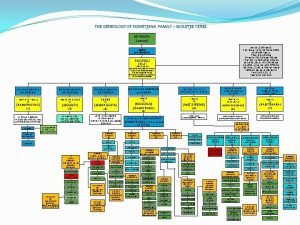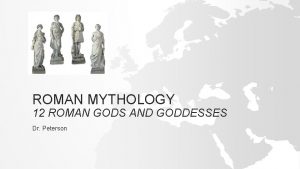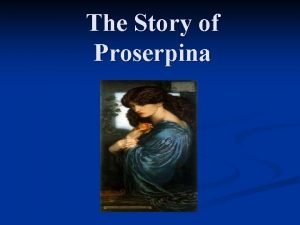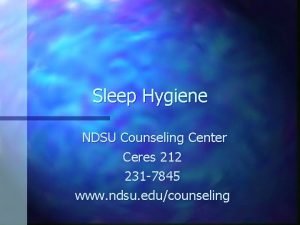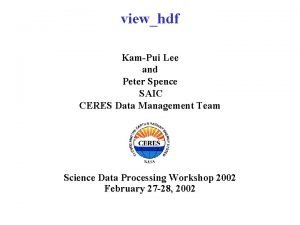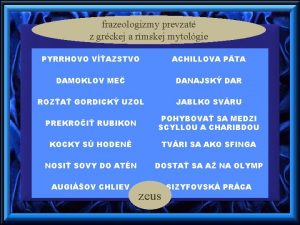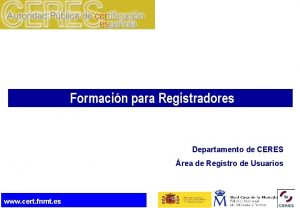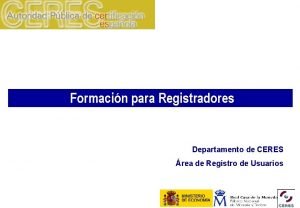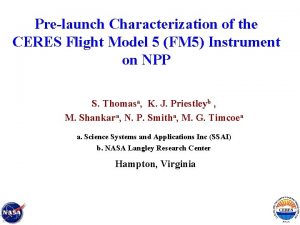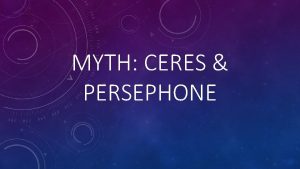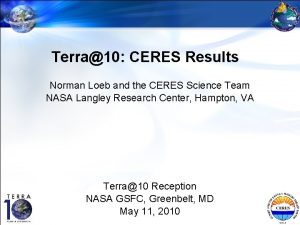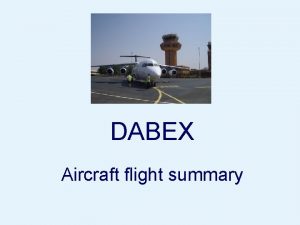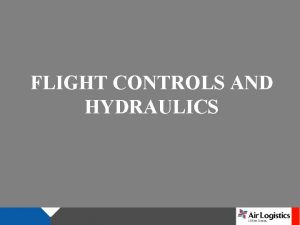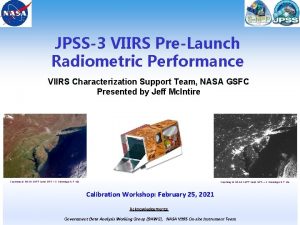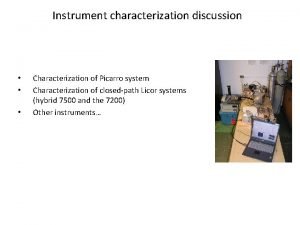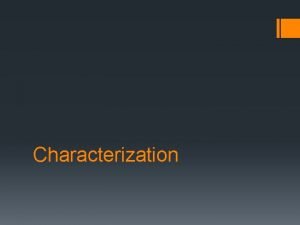Prelaunch Characterization of the CERES Flight Model 5
















- Slides: 16

Pre-launch Characterization of the CERES Flight Model 5 (FM 5) Instrument on NPP S. Thomasa, K. J. Priestleyb , M. Shankara, N. P. Smitha, M. G. Timcoea a. Science Systems and Applications Inc (SSAI) b. NASA Langley Research Center Hampton, Virginia

Earth Radiation Budget Components CERES Top of Atmosphere Kiehl & Trenberth 1997

CERES Instruments Broadband scanning Radiometers measuring Reflected Solar and Emitted Longwave Radiation. Six CERES Instruments built by Northrop Grumman Aerospace Systems (NGAS) at Redondo Beach, CA. FLIGHT MODEL 5 (FM 5): NPP Spacecraft Sun synchronous polar orbit with 1: 30 PM equatorial crossing. Altitude: 825 KM Proposed Launch: October 2011 Four Sets are Operational on EOS Spacecraft Flight Models 1 & 2 (FM 1 & FM 2) – TERRA Flight Models 3 & 4 (FM 3 & FM 4) - AQUA

CERES INSTRUMENT • Contains three sensor assemblies with cassegrain optics and thermistor bolometer detectors • Sensors measure thermal radiation in the near-visible through far-infrared spectral region • Three sensor channels are coaligned and mounted on a spindle which rotates about the elevation axis • Sensor Assembly Unit rotate about the azimuth axis providing hemispherical sampling of data • Pre-launch Calibration Accuracy Requirements 0. 5% LW, 1. 0% SW Total: 0. 3 - >100 micron Shortwave: 0. 3 – 5. 0 micron • CDR Measurement Stability Goals - 0. 02%/yr LW, Window: 8. 0 – 12. 0 micron 0. 03%/yr SW

FLIGHT CALIBRATION SYSTEMS Internal Calibration Module Total & Window: Anodized Aluminum Blackbody sources Shortwave: Evacuated Quartz Tungsten Lamp Mirror Attenuator Mosaic (MAM) Total & SW Sensors: Solar Diffuser Plate Nickel substrate with Aluminum coated spherical cavities

CERES Radiance Equation Filtered Radiance : Sensor Counts : Sensor Gain : Sensor counts viewing space Filtered Radiance : Unfiltered Radiance Spectral responsivity τf : Filter Transmittance ρm : Mirror Reflectance αb : Paint Absorbtance

CERES Pre-Launch Calibration Pre-launch Calibrations were performed at the Northrop Grumman Radiometric Calibration Facility (RCF). Four calibrations were performed on CERES FM 5 instrument after it was fabricated. March 1999 February 2000 October 2006 Sept. –Oct. 2008 14 days 9 days 11 days 33 days Completed hot acceptance tests. During cold acceptance testing, calibration was stopped due to carousel problems. Tests done in hot and cold acceptance temperatures. Calibration tests done only in hot acceptance temperatures. Full calibration tests in hot and cold acceptance temperatures.

Ground Calibration Tests • Longwave Responsivity • Shortwave Responsivity and Spectral Characterization • Linearity in Sensor Responsivity • Calibrations using on-board sources • Point Response Function Test • Solar MAM Characterization

Radiometric Calibration Facility IR Bands • Narrow Field of View Blackbody (NFBB) is primary standard (Emissivity of greater than 0. 9999) • 12. 5 cm Wide Field of View Blackbody (WFBB) • Cold Space Reference (CSR) blackbodies Reflected Solar Bands • SW reference source (SWRS) with minimum LW variations and spectral characterization capability • 13 discrete bands between 420 and 1960 nm • 5 cm integrating sphere with associated optics • Cryogenically cooled Transfer Active Cavity Radiometer (TACR)

CERES Longwave Calibration Total and Window Sensors • Narrow Field of View Blackbody (NFBB) is operated at 12 discrete temperature setting between 205 K and 312 K. • Sensor drifts are corrected with Cold Space Reference (CSR) measurements. • Relative Spectral Response of the sensor is determined from Fourier Transform Spectrometer (FTS) measurements. • Radiometric gain of the sensor is calculated through regression of the filtered radiance from NFBB source and the corrected sensor measurements.

CERES Shortwave Calibration Shortwave and SW/Total Sensor • Short Wave Reference Source (SWRS) with 13 narrow band-pass filters between 0. 4μm and 2μm are used as calibration points. • Transfer Active Cavity Radiometer (TACR) act as the transfer standard to place the SWRS on same radiometric scale as the Narrow Field of View Blackbody (NFBB). • Sensor gains are determined from the alternate measurements of SWRS by the CERES sensor and the TACR. • Optical component measurements of witness samples are used to complete the spectral response between the narrowband SW sources and to extend the response below 0. 3μm.

CERES Spectral Response Function Flight Model 5 (FM 5) Instrument

Calibrations using On-board Sources Sensor performance was evaluated using Internal calibration module sources (ICM) throughout test period. The response changes between ground and start-of-mission calibrations will be used as Ground to Flight corrections for radiometric gains.

CONCLUSION The final pre-launch vacuum characterization of CERES FM 5 instrument was performed in September 2008. Total and Window sensor gains determined by the NFBB is 8. 577 counts/Wm-2 and 10. 495 counts/Wm-2 respectively. The shortwave sensor gain derived using the SWRS and TACR is 10. 105 counts/Wm-2. Spectral response for sensors were derived using the SWRS/TACR and optical component measurements in < 3 micron and FTS measurements in > 3 micron region. ICM calibrations provide a transfer standard for the prelaunch determined radiometric gains to flight.

BACK-UP SLIDES

NFBB Residuals
 Iraad definition project management
Iraad definition project management Moletjie history
Moletjie history Venus greek name
Venus greek name La poetisa de pompeya
La poetisa de pompeya Proserpina story
Proserpina story Ndsu counseling center
Ndsu counseling center Ceres gezegeni
Ceres gezegeni Ceres lee
Ceres lee Augiášov chliev frazeologizmus
Augiášov chliev frazeologizmus Departamento ceres
Departamento ceres Departamento ceres
Departamento ceres Indirect and direct characterization
Indirect and direct characterization What does indirect characterization mean
What does indirect characterization mean Prosci preferred sender
Prosci preferred sender Hình ảnh bộ gõ cơ thể búng tay
Hình ảnh bộ gõ cơ thể búng tay Bổ thể
Bổ thể
